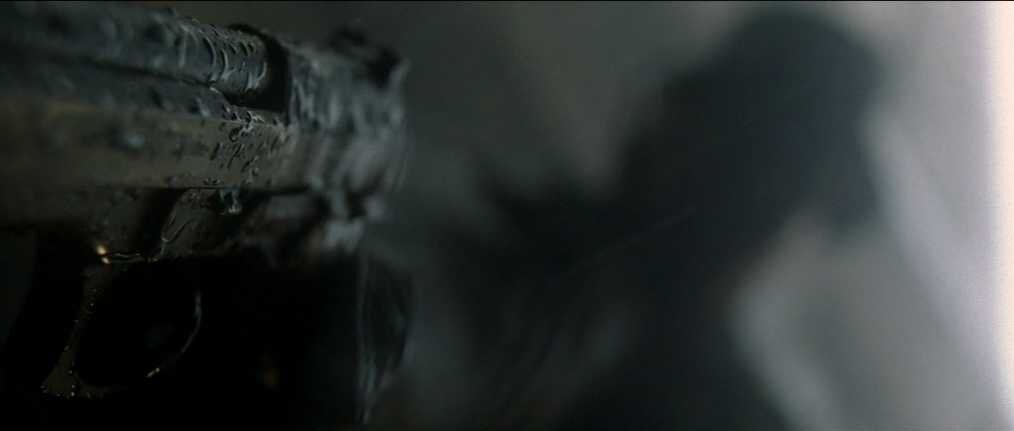Looking Back - The Cinematography of Seven
Seven features two detectives searching for a biblically inspired serial killer against the backdrop of a fictionalized inner city that is relentlessly drenched in rain and locked somewhere perpetually on the ‘wrong side of the tracks’.
The setting is skid-row anywhere in North America, except the implication is that it is more than just a bad part of town, but rather an almost mythical purgatory, a modern Gamora whose residents who eat disgusting food in greenly lit late-night cafes and cluster together in squalid tenement houses. This is a world as observed from the inside of a back alley dumpster.

From the first roll of Kyle Cooper’s astonishing title sequence (a visual look that has since launched a thousand CSI’s) through to the glowing, almost angelic shots of Kevin Spacey in the film’s macabre climax, Seven sets a dark, claustrophobic tone that pulls no visual punches. Scores of horror films and detective dramas have echoed the look of the film since - but at the time it was released, there was simply nothing else that looked like it.
Watching it again I was struck by how strangely attractive a film it is, in spite of its often putrid and visceral motifs. Like a Gothic etching of hell, or a painting by Goya, the visuals are both disturbing and compelling. Each shot is perfectly composed, and the lighting throughout exquisite with every ‘practical’ lamp and analogue flashlight forming an integral part the overall storytelling.
The film also features one of the most remarkable chase sequences I can remember. Other films have since emulated the shadowy antagonist who seems to be both fleeing while at the same time menacing his pursuer. While the ubiquitous chase normally flows in a fairly clear direction, the sequence in Seven is abrasive and non-linear, and, ultimately leads the pursuer to become the prey echoing one of the film’s persistent themes.

‘It has to be scary’.
This was the over-reaching brief given by director David Fincher to his cinematographer.
Fincher has been described as a hands-on director whose films have a distinctive look, and according to cinematographer Darius Khondji he was very involved in the framing of every shot. His style, dubbed his ‘Dark Clarity’, is a look that may now be taken for granted with the advent of digital grading and editing techniques, but at the time involved extensive pre-processing (‘flashing’) of the negatives and chemical treatment (bleaching) of the film. The end effect is that of narrow dynamic range in the highlights and mid-tones while retaining deep, rich black tones. It’s almost like someone has painted in a saturated color palette over top of a high contrast black-and-white print. For me, it’s like he’s finding the story lurking in the shadows.
For his part, Khondji brought his mastery of lighting and strong aesthetic. ( Khondji is an Iranian cinematographer, trained at NYU, and also known for influential projects like Delicatessen and The Beach).
He often uses ‘motivated’ light sources - in other words, the light in the shots always looks like it’s coming from something real in the scene - like a window, desk lamp or reflection in a mirror. He also regularly employs a strong, soft single main light sources and then sculpts where it lands using a variety of screens and deflectors. For Seven, he extensively employed Chinese lanterns which are just cheap light shades one can purchase from shops like Ikea, but none-the-less provide a lovely diffuse quality of light. Again, the final effect is that of fairly murky mid-tones and subtle highlights but loads of detail and richness in the shadows.

He mentions being inspired by the work on Silence of the Lambs among other films, and, like numerous cinematographers, cites Robert Frank’s photography book The Americans as having inspired the look of the Seven - particularly in terms of mixing of bright exteriors with relatively dark, moody interiors.
I also wasn’t surprised to learn he cited the photographer Joel-Peter Witkin as an influence for Kevin Spacey’s character whose killings he described as something like individual works of performance art. The meticulously perverse and morbid qualities of Witkin’s work had sprung to mind for me when watching Seven again.
Much of the film was shot ‘wide open’ with a low f-stop, meaning that there is a very narrow range for what is in focus. This is a great way to draw the viewer’s attention to specific details in the scene but it can be tricky to achieve technically, especially with moving subjects.


Despite it not being much of an ‘easy’ watch as a film, I very much enjoyed going back to this classic with its groundbreaking visual style and gritty, compelling imagery.

Seven is available to watch online in the UK on Netflix. Many thanks to film-grab.com for image stills.
References:
What’s the distinct color grading in David Fincher’s movies?
Anatomy Of An Opening Sequence:David Fincher’s Seven
Understanding the Cinematography of Darius Khondji
Joel-Peter Witkin on Artnet
Flashback: Seven, American Cinematographer
Se7en is 20 years old today so here are seven things that we love about the classic thriller

